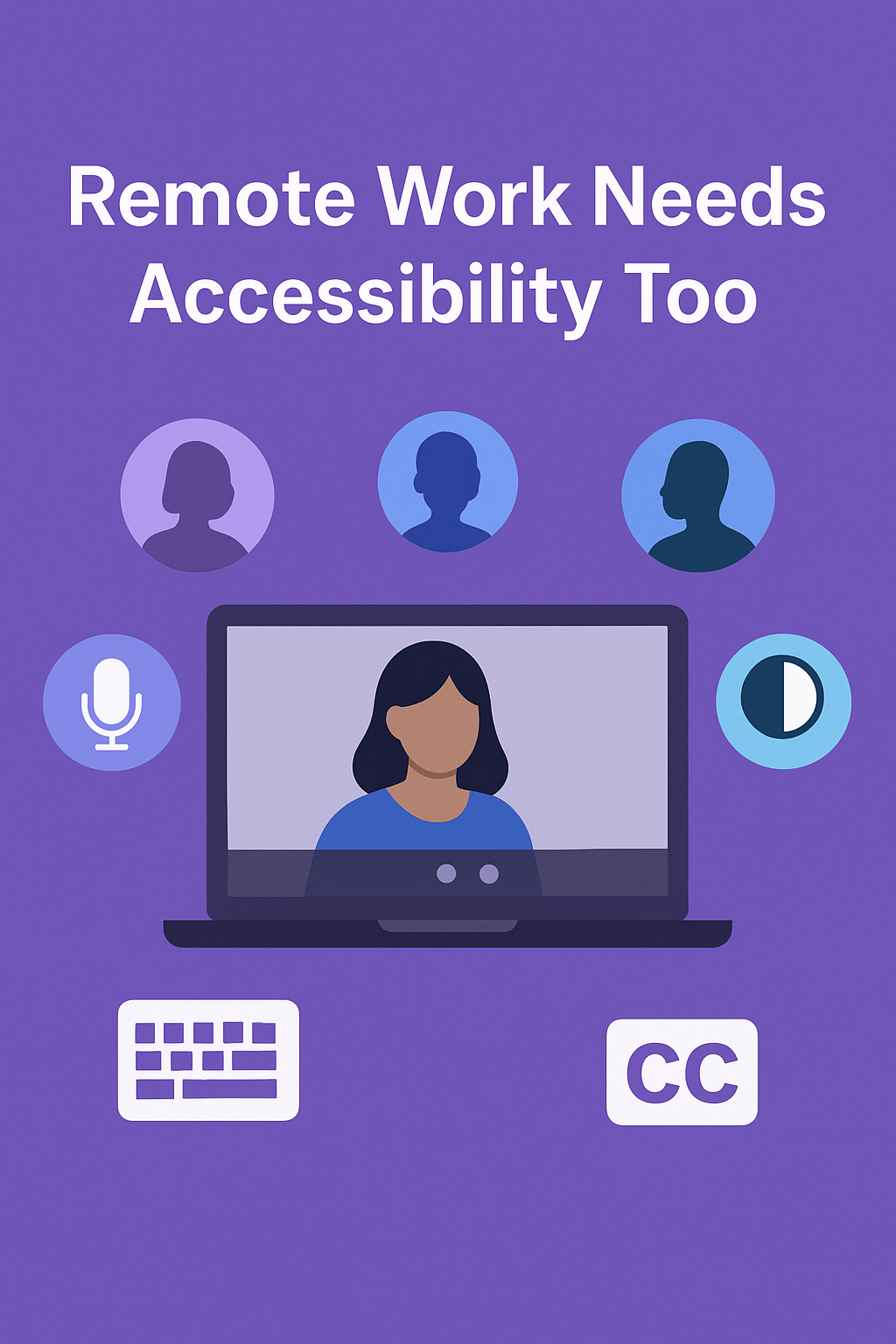Accessibility and Remote Work Platforms – Closing the Inclusion Gap
Remote and hybrid work have become the standard in 2025. A recent report shows that 70% of businesses now operate with hybrid teams. But while remote platforms have unlocked flexibility, many remain inaccessible to employees with disabilities.
The result? Companies risk excluding valuable talent and failing compliance standards.
Accessibility in remote work is not optional; it is a business-critical investment.
Why Accessibility Matters for Remote Teams
- Talent retention and recruitment: Employees with disabilities are more likely to thrive when workplace tools are accessible.
- Compliance with global standards: The EAA, WCAG 2.2, and ADA cover internal platforms as much as public-facing sites.
- Inclusive digital workplaces: Accessibility fosters belonging, boosting productivity and morale.
Common Accessibility Barriers in Remote Tools
- Video calls without captions or transcripts
- Chat platforms with poor screen reader support
- Dashboards requiring mouse-only navigation
- Colour schemes with insufficient contrast
Key Features to Enable in 2025
- Voice navigation for hands-free use
- Keyboard accessibility for collaboration tools
- High-contrast and resizable text for HR and project dashboards
- Language options for multinational teams
Accessibility Toolbar for Remote Work
Accessibility Toolbar integrates seamlessly with intranet portals, HR dashboards, and training hubs.
Its AI Voice Navigation allows hands-free navigation, while features like contrast modes, text resizing, and 40+ language support make remote platforms accessible for every team member.
FAQ:
Is accessibility required for internal tools? Yes. Under the EAA and ADA, employee platforms must be accessible.
Does accessibility improve productivity? Absolutely. Employees spend less time struggling with barriers and more time delivering results.





